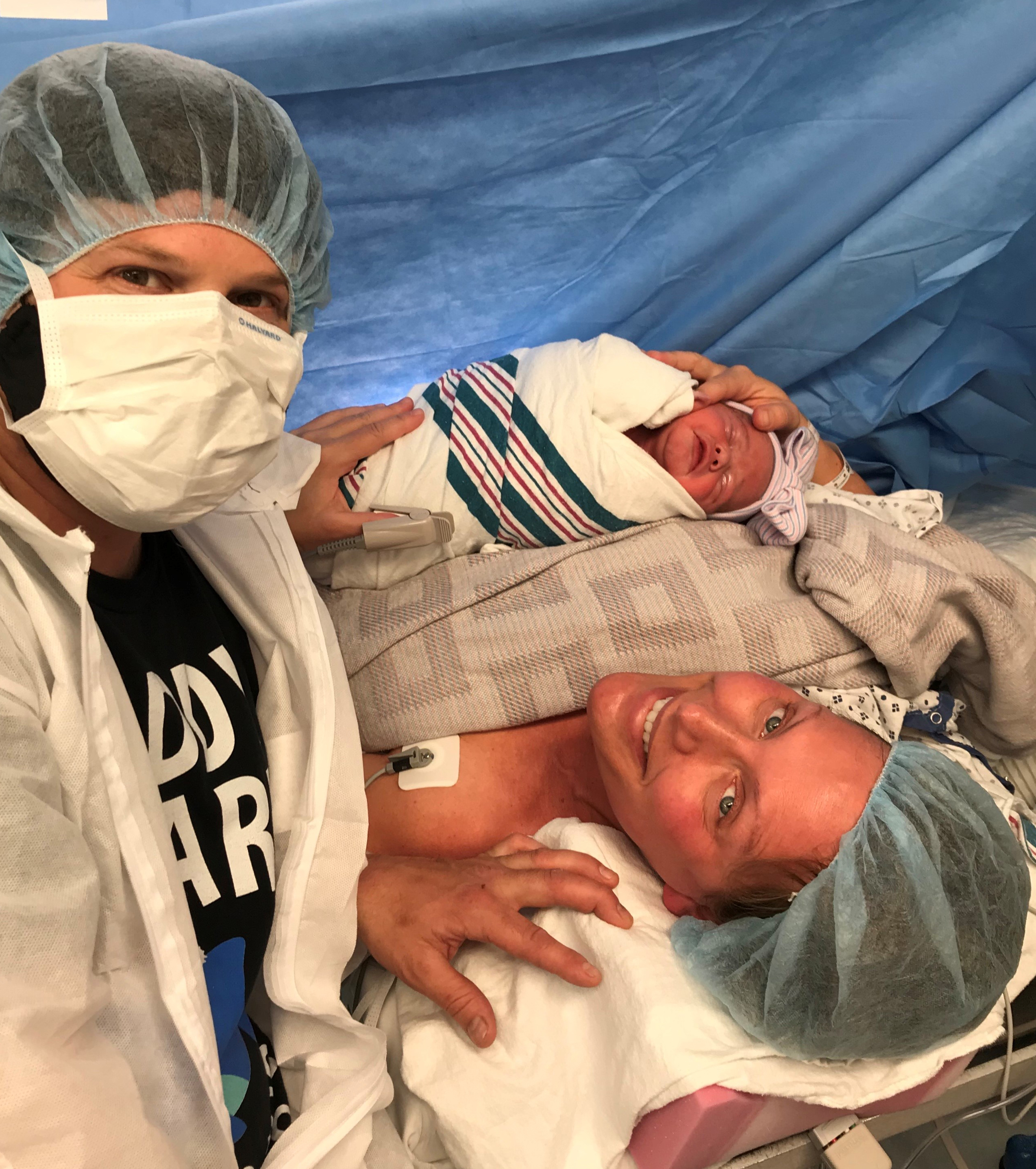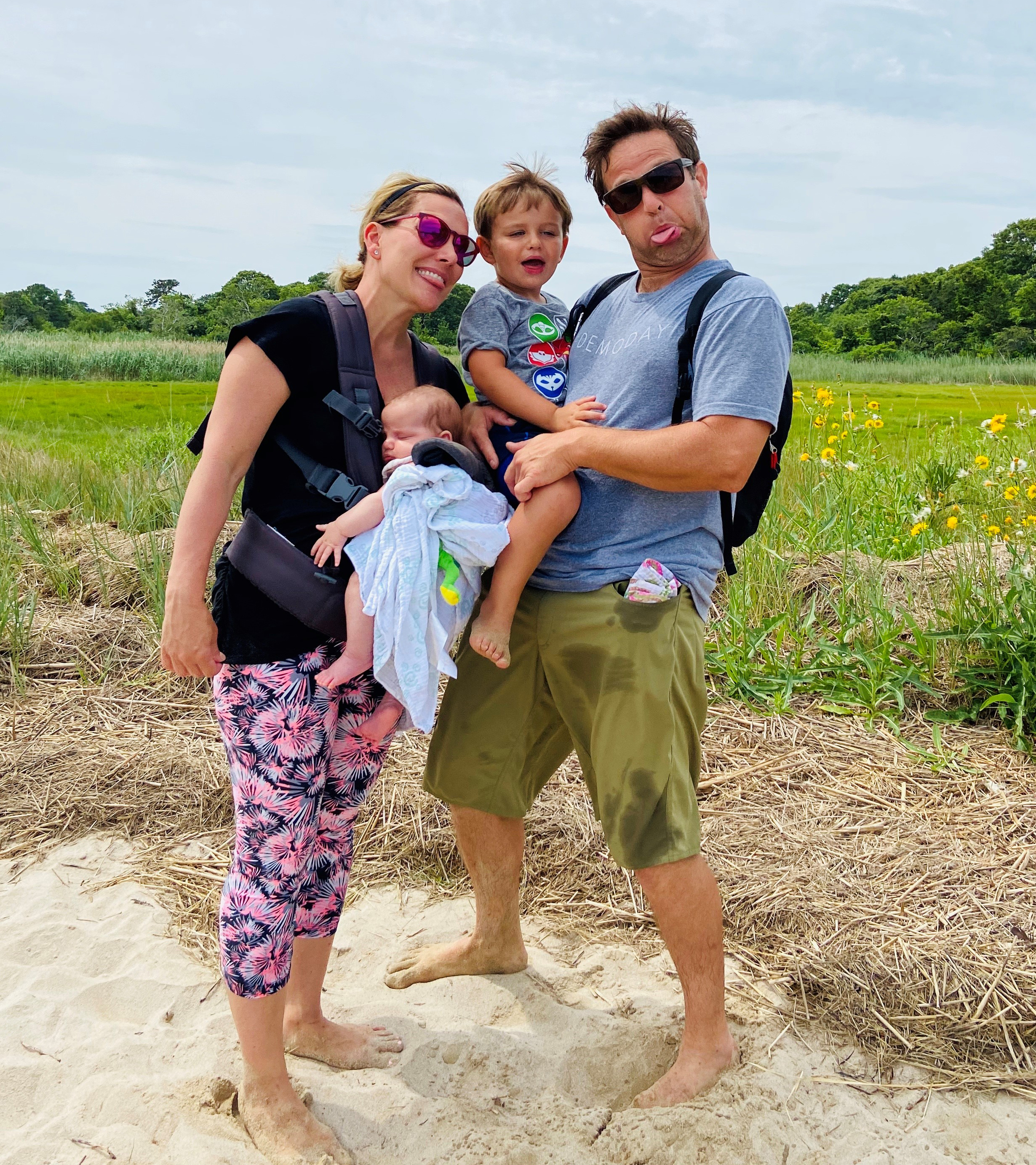For second-time mom Kimm Dinsmore, there wasn’t a question about where she wanted to welcome her new baby in May 2020.
My son, Otis, is three years old, and we had an absolutely great experience,” said Kimm, who is also Penn Medicine’s Director for Health System Outreach. “I wanted to deliver at Pennsylvania Hospital again.”
Despite going to the same Penn Obstetrics practice, the months leading up to her delivery were much different. In March 2020, when Kimm was seven months pregnant, the first cases of COVID-19 were confirmed in Philadelphia.
“It was obviously an unsettling time,” she said. “Information on the virus changed daily, and Penn Medicine evolved its protocols on how to best treat patients during the pandemic, especially in Maternal Fetal Medicine and Ob/Gyn, which are really high-touch, personal, nurturing areas of medicine.
“My care team was incredible. Everyone did the very best they could with the circumstances.”
Safe and essential in-person care
Photo by Devon Anne Photography
Because her pregnancy was considered high-risk, Kimm had weekly visits with the Maternal Fetal Medicine (MFM) team at Penn Health for Women Washington Square to monitor baby Elin’s heartrate and activity – tests that couldn’t be done virtually. The MFM providers then communicated with her obstetrician, making it possible for some late-third-trimester appointments to be done via telemedicine.
“The care team was transparent and proactive,” Kimm said, noting that she received a phone call or myPennMedicine message before every appointment with updates on safety, including Penn Medicine’s universal masking policy, thermal screening and sanitization practices. “It was reassuring to have those phone calls in advance, from a live person, letting me know, ‘Here's the latest update on our protocols and what you can expect during your visit.’”
Penn Medicine’s safety measures include a strict visitation policy that meant Kimm needed to attend her weekly in-office appointments without her other half, Mark.
While the lack of in-person partner support was disappointing at first, Kimm was able to video chat with Mark during parts of her visits. And her care team, led by Sara Folit-Weinberg, MD, always made her feel comfortable.
“They stepped up to help fill that [in-person partner support] space,” Kimm said. “They did a great job of providing that personal connection, explaining things in real-time and making sure all of my questions were answered and that I felt OK.”
Having a baby during COVID-19
 Many parts of pregnancy and delivery are unpredictable, even in more normal circumstances.
Many parts of pregnancy and delivery are unpredictable, even in more normal circumstances.
Thankfully for Kimm, some of her anxiety around delivering during a pandemic subsided when she welcomed Elin as planned during a scheduled caesarian section on May 15, 2020.
When she and Mark arrived at Pennsylvania Hospital earlier that day, they both were thermal screened. Kimm also received a rapid test for COVID-19, as well as bloodwork – typically done during separate appointments in the days before a C-section – upon arrival.
“Patients who tested positive for COVID-19 had separate care teams, operating rooms and stayed in separate areas of the hospital from those who tested negative,” Kimm said. “Everything was determined by the results of the rapid test.”
After receiving a negative result, Kimm prepared for her C-section and later that day was able to hold Elin for the first time.
Support, recovery and going home
 Many components of recovery after giving birth are the similar to how they’ve been for years at Pennsylvania Hospital. A nursing team attends to new parents in the hours and days after birth, lactation consultants are available to help with breastfeeding support, and resources are available for the new baby.
Many components of recovery after giving birth are the similar to how they’ve been for years at Pennsylvania Hospital. A nursing team attends to new parents in the hours and days after birth, lactation consultants are available to help with breastfeeding support, and resources are available for the new baby.
However, there are some differences.
Walking is important and encouraged after a C-section, and Kimm had to walk laps around her room instead of through the hospital’s hallways. To help limit outside COVID-19 exposure to other patients and staff, Mark was unable to leave the hospital and come back during their stay. They also weren’t permitted to have other visitors at the hospital to meet Elin.
“Initially, we were disappointed, but we ended up cherishing the time we got to spend alone in our hospital room, getting to know our daughter without any outside distractions,” Kimm said.
Despite the differences between her experience with Elin and with Otis three years earlier, Kimm still received the same high-level of care. From the doctors and nurses who took care of her and the baby, to environmental services workers who kept her room clean and safe, to the transporter who wheeled her to her car after discharge, everyone made an impact.
“Every person I came across throughout my stay, all the little things down to when I was discharged made a difference,” she said. “You're the most vulnerable that you probably ever are – you can't take care of yourself – and you just need to rely on other people. Those other people, from the beginning to the very end, made a lasting, positive impact on our experience.”